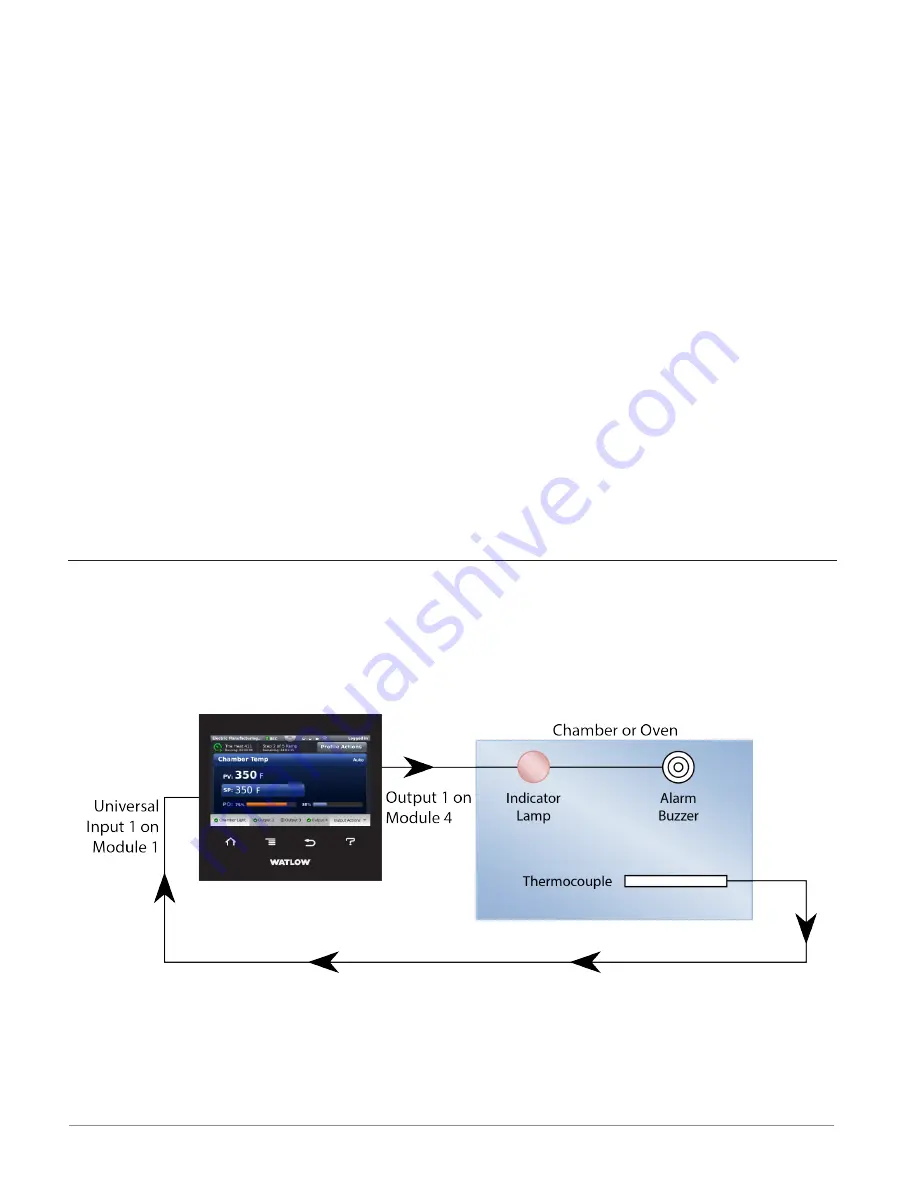
Watlow D4T Data Logger
•
52
•
Chapter 4 Application Examples
Application Tips:
• Alarm blocks are initially located in the library and can be dragged to the canvas.
• The signal from the universal input to IN on the alarm is the one the alarm monitors
against the alarm set point.
• The signal from the alarm to the output indicates when the alarm has occurred. The
alarm is indicated on the data logger whether or not there is an output attached; the
output on the alarm block is for use with additional logic in the application diagram or
to drive external devices as is shown in this example.
• Enter names for blocks where possible to make the application easier to understand.
• The control loop is not necessary for the alarm; it is shown here just to make it clear
that more than one function block can receive the analog input signal.
• Make sure the input block’s Sensor Type and other parameters are set correctly for
your sensor.
• By default the alarm’s type setting is Off. Set it to Process Alarm.
• Set the alarm’s Sides setting to High or Low if you want to monitor only for the pro-
cess value going too high or too low, or set Sides to Both if you want the alarm to occur
when the process value is either too high or too low.
• For more information on alarm parameters see the section entitled "
" in Chapter
5.
Deviation Alarm
In this example Universal Input 1 on module 1 measures the temperature of a chamber or ov-
en with a thermocouple. Alarm 1 monitors the temperature from the universal input which is
also used by the control loop as feedback for heat control. When the temperature gets farther
from set point than the user-adjustable, alarm set points, output 1 on module 4, a form C re-
lay energizes an audible alarm and an indicator lamp to get the operator’s attention.
















































